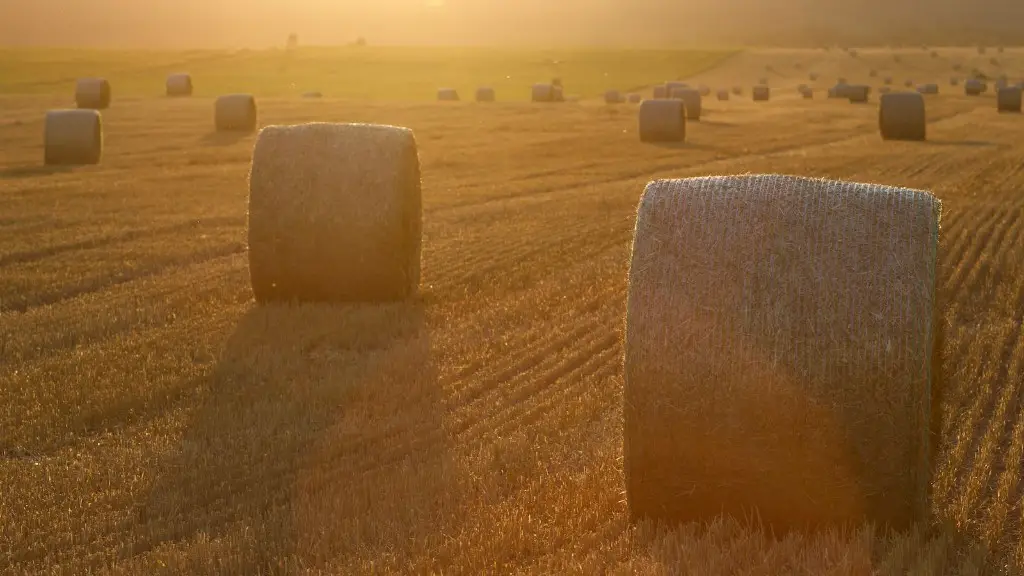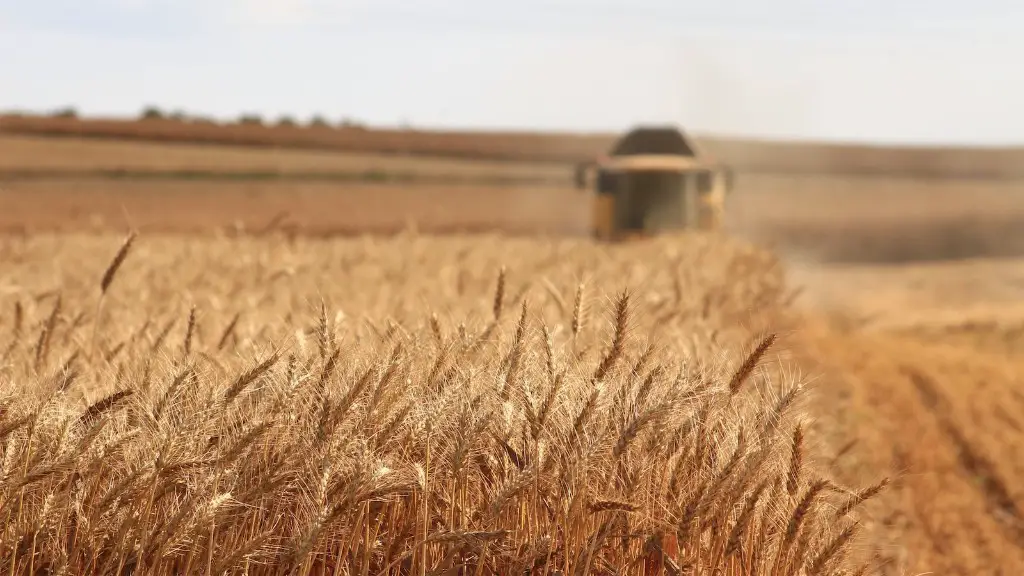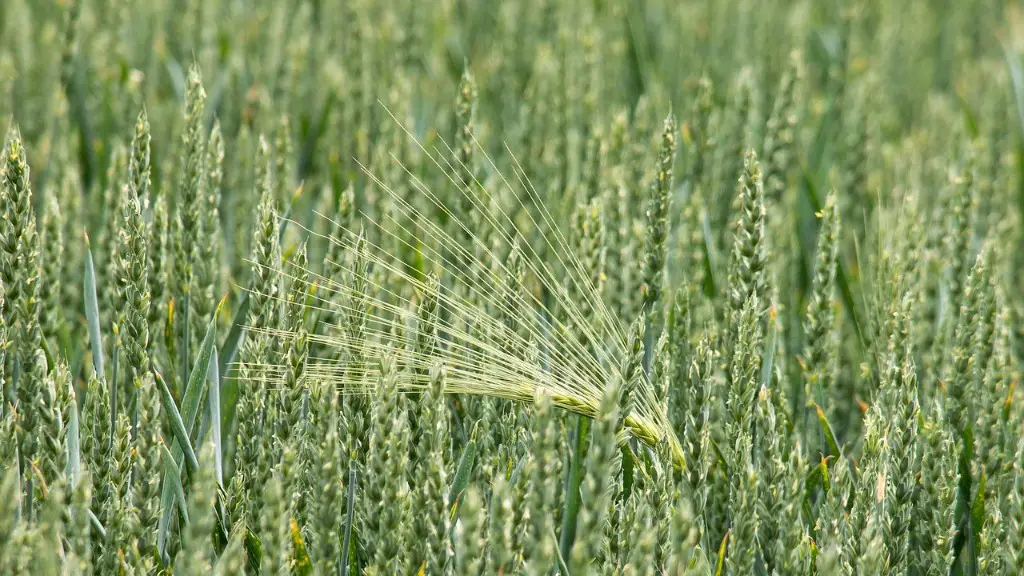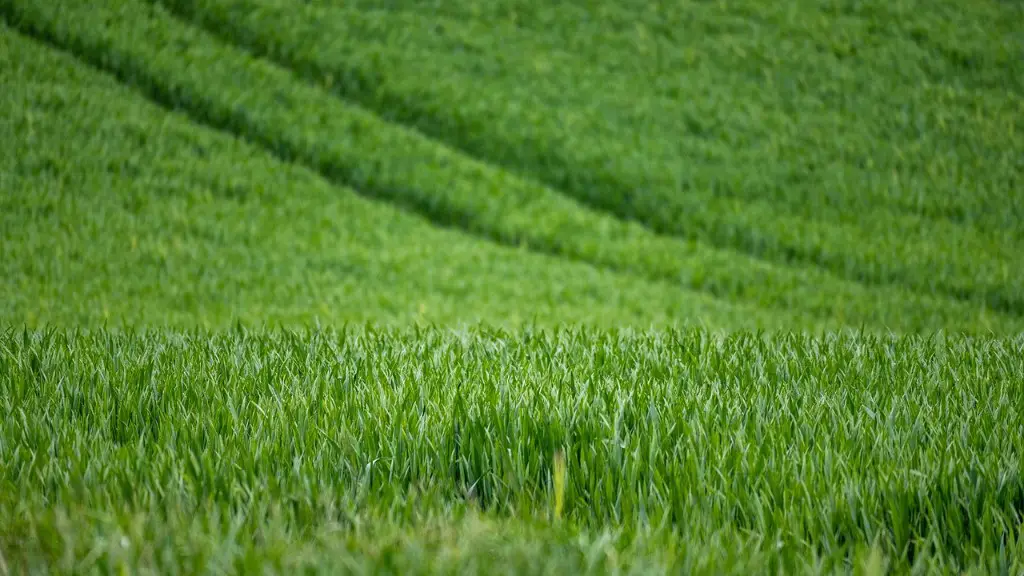Agricultural practices require a certain amount of mechanical power for tasks such as harvesting, ploughing, planting, and cultivating crops. Mechanical power, sometimes known as ‘mechanical force’, is defined as the product of force and velocity, or the rate at which work is done. It is used to transform energy into an appropriate form and is necessary to complete agricultural tasks efficiently and safely. Farming relies heavily on mechanical power, with the use of tractors, combines, tillers and balers all part of the process.
Mechanical power is used in agricultural applications to reduce the amount of physical labor associated with farming tasks. This helps to free up more time to focus on other activities and to optimize the process. It can also help to maximize yields and reduce labor costs. Additionally, the use of mechanical power can help to reduce the fatigue that may come with long hours of physical labor, allowing farmers to remain productive throughout the day.
The amount of mechanical power needed to complete agricultural tasks depends on the size of the task and the power requirements of the equipment used. Mechanical power can be generated through a variety of sources, including gasoline, diesel, and electric power. The best power source will depend on the application and the particular requirements of the task.
Safety is another key factor to consider when using mechanical power in agriculture. Proper safety protocols and protective equipment should be used at all times. Additionally, the appropriate safety training should be provided to all personnel operating any type of power equipment. Failure to adhere to safety protocols can lead to serious injuries or death.
In conclusion, mechanical power is essential in agricultural practices today. It can reduce the amount of physical labor required, free up time for other activities, and help to maximize yields. Additionally, safety protocols must be followed to ensure the safety of all personnel involved.
Mechanical Power and Harvesting
Harvesting is one of the key tasks that rely heavily on mechanical power in agriculture. Mechanical power can be used to power the harvesting machine, provide movement and elevate crops prior to harvesting, as well as separate and transport the crops to storage after harvesting. Appropriate harvesting equipment is needed to maximize efficiency, yield and safety, and to minimize labor costs.
Tractors are the most common type of equipment used for harvesting, with power typically supplied either by a diesel or gasoline engine. Tractors come with a range of attachments to provide additional functions as needed, such as front-mounted cutting blades and rear-mounted collection buckets. Robotic harvesting is another option, however it can be costly and requires significant logistical support.
Safety is always a top priority when harvesting. Proper safety procedures, such as the use of helmets, safety harnesses, and protective clothing should be used at all times. Additionally, workers should be properly trained in the use of any harvesting equipment to minimize the risk of injury or death.
In conclusion, mechanical power is necessary for efficient, safe and effective harvesting. Appropriate power sources and harvesting equipment should be chosen to maximize yield and minimize labor costs. Additionally, safety protocols must be followed to ensure the safety of personnel at all times.
Mechanical Power and Ploughing
Ploughing is another agricultural task that relies heavily on mechanical power. Mechanical power can be used to clear debris and help to prepare the soil for planting. It can also reduce the amount of physical labor associated with the process and can lead to greater efficiency.
Tractors and cultivators are the most commonly used equipment for ploughing. Tractors are typically powered by either diesel or gasoline engines, and come with a wide range of attachments to help with different tasks. For example, a disc harrow attachments can be used to break up the soil, while a cultivator attachment can be used to help turn the soil over.
To ensure safety, operators should be properly trained in the use of any ploughing equipment. Operators should ensure that all guards and other safety features are in place before operating the equipment. Additionally, workers should wear the appropriate protective equipment when operating machines, such as helmets, gloves, and safety harnesses.
In conclusion, mechanical power is essential in agricultural ploughing. The use of tractors and other equipment, combined with appropriate safety protocols, can help to maximize efficiency and yield, while minimizing the risk of injury or death.
Mechanical Power and Planting
Mechanical power is also used in the planting of crops. Mechanical power enables plant parts, such as seed and fertilizer, to be spread into the soil quickly and evenly. The use of tractors and other agricultural equipment can help to speed up the process and can help to reduce the physical labor required.
Seed drills are the most commonly used equipment for planting. They can be powered either by a gas or diesel engine and are typically pulled behind a tractor. Seed drills are equipped with a number of attachments, such as a seed hopper, which can be used to metering and accurately laying out the seed.
When using any type of power equipment for planting, the appropriate safety protocols and equipment should be followed. Workers should be trained in the use of the equipment, and should wear the appropriate protective clothing and safety gear at all times. Additionally, all guards and safety features of the machine should be checked before operating.
In conclusion, mechanical power is necessary for efficient, safe and effective planting. Appropriate power sources and planting equipment should be chosen to maximize yield and minimize labor costs. Additionally, safety protocols must be followed to ensure the safety of personnel at all times.
Mechanical Power and Cultivating
Cultivation is another important agricultural task that relies heavily on mechanical power. Mechanical power can be used to help to break up soil clumps and to loosen compacted soil before planting. It can also help to provide aeration and moisture to the soil, provide nutrients to the crops and reduce weeds.
The most common type of equipment used for cultivation is the rotary tiller or cultivator. These are typically pulled behind a tractor and are powered by either diesel or petrol engines. Rotary tillers come with a range of attachments to help with specific tasks, such as cultivators to help break up soil and harrows to help spread fertilizers.
Safety is an important consideration when using any type of power equipment for cultivation. Operators should be adequately trained in the use of the equipment and should wear the appropriate protective clothing and safety equipment at all times. Additionally, all guards and safety features of the machine should be checked before operating.
In conclusion, mechanical power is essential for efficient, safe and effective cultivation. Appropriate power sources and cultivating equipment should be chosen to maximize yield and minimize labor costs. Additionally, safety protocols must be followed to ensure the safety of personnel at all times.
Mechanical Power and Balers
Balers are a type of agricultural equipment used to collect and compress materials, such as hay, straw, and grass into bales. Mechanical power is needed to power the baler and to provide movement and elevation as needed. Mechanical power can also help to compress the material into bales efficiently, reducing labor costs and freeing up more time for other activities.
Balers can be powered either by diesel or petrol engines, with a range of different attachments available to meet specific needs. Such attachments can include pick-up heads, windrow turners, and wrapping machines. As with any type of power equipment, safety protocols should be followed to ensure the safety of personnel at all times.
In conclusion, mechanical power is necessary for efficient and safe baling. Appropriate power sources and baling equipment should be chosen to maximize yield and minimize labor costs. Additionally, safety protocols must be followed to ensure the safety of personnel when handling balers.





